2023 NFL Combine Flops with the Most to Prove at Pro Days
2023 NFL Combine Flops with the Most to Prove at Pro Days
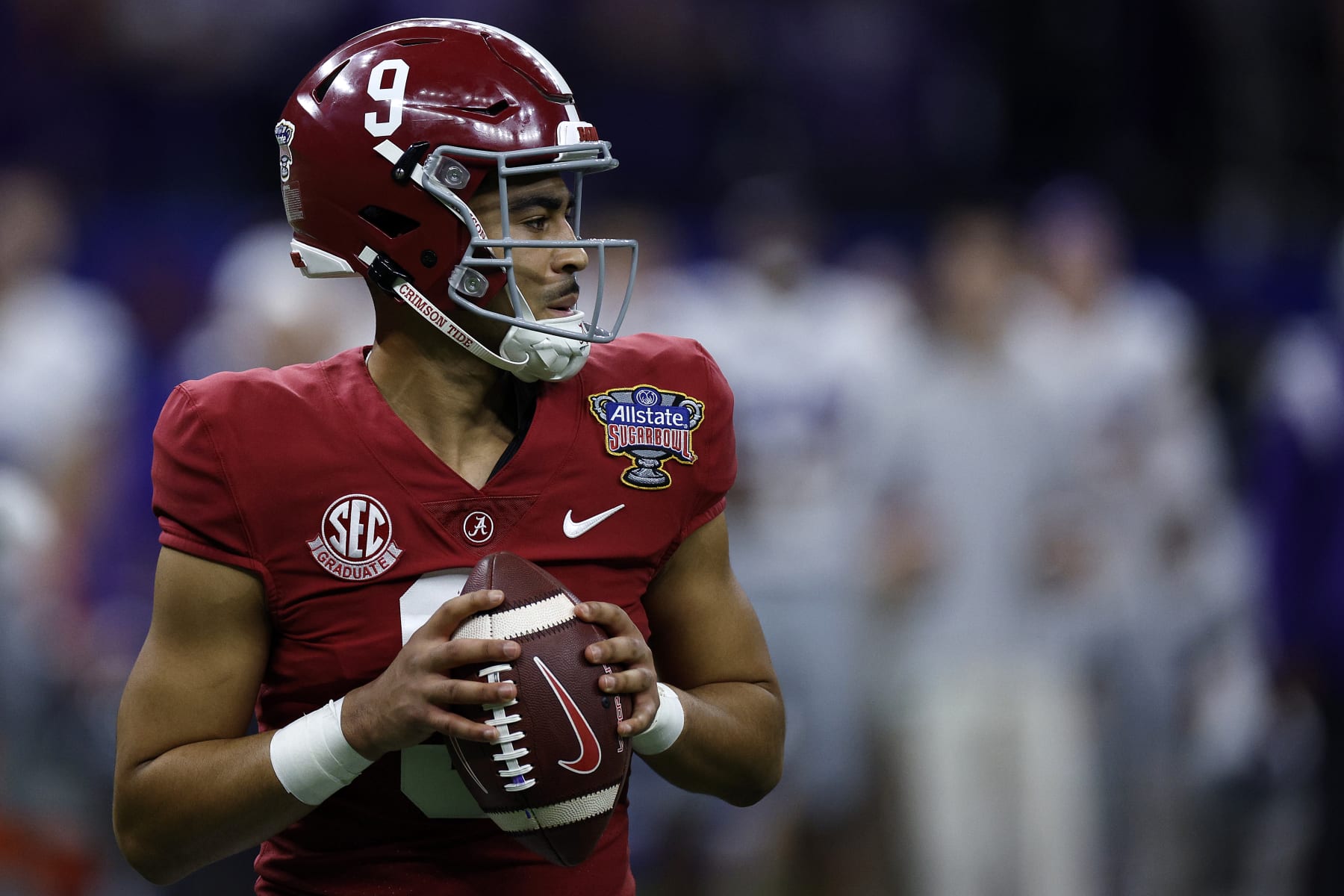
With the NFL Combine over, this year's draft class is running out of opportunities to prove themselves to NFL scouts and general managers. Next up are the pro days, and after that, the interview process is over and it's time to find out who did enough to earn a job and make some life-changing money.
Overall, last week's combine featured a lot of standout performances as several prospects put up some jaw-dropping numbers in the athletic testing workouts and on-field drills. "Losers" were hard to come by, but there were a few players who missed the mark and underperformed.
All is not lost for those who fell into the latter category, but they'll certainly be facing more pressure during the Pro Day workouts than their peers.
The reasons why players landed on this list vary. For some, it's as simple as improving on their times in Indianapolis because they underperformed or fell short of certain expectations, while others need to find a way to keep pace with the rest of the competition.
Regardless, the pressure is on as the difference between a good and bad Pro Day performance could equate to millions of dollars. Again, this is the last opportunity they'll have to impress the NFL's decision-makers.
For reference, a player's Relative Athletic Score (RAS) will be referred to throughout this article. RAS is a formula that factors in a prospect's size and athletic testing numbers to generate a numeric score that's based on previous combine performances.
The calculator factors in what position each player plays, and the overall score and the score for each test will vary based on said position. For example, a 4.7-second 40-yard dash time would receive a poor score for a wide receiver but an elite one for an offensive lineman.
Bryce Young

In fairness to Bryce Young, it's not that he did anything in Indianapolis to hurt his draft stock, but he does land on this list because he didn't do anything.
The 2021 Heisman Trophy winner opted to sit out of the on-field workouts while the other top quarterbacks—Florida's Anthony Richardson, Ohio State's CJ Stroud and Kentucky's Will Levis—hit the field.
Richardson ended up putting together one of the best combine performances from a quarterback ever with a perfect 10 RAS Score, and he put on a show during the throwing drills. Stroud didn't participate in the athletic testing, but his throwing session was deemed "one of the best" NFL Network's Daniel Jeremiah has ever seen.
As for Levis, he earned an elite grade from RAS for his explosion with a 34-inch vertical and 10'4" broad jump while measuring in at 6'4" and just under 230 pounds. He also was relatively sharp tossing pigskin around as well.
In a sense, Young needs to have a good Pro Day in Tuscaloosa to "keep up with the Joneses". Had one or two of the other top-four quarterbacks underwhelmed, then him sitting out wouldn't have been a big deal. But the other three all put their best foot forward, and the competition level for the No. 1 overall pick has risen.
The Alabama product did check off one box by weighing in over 200 pounds—204 to be exact, 10 pounds heavier than his listed weight in college. However, a lot of his game and ability to avoid injury is based on the way he moves and avoids hits, and we don't know if that will carry over with the added weight. That's what he'll need to prove at Bama's Pro Day.
Jordan Addison
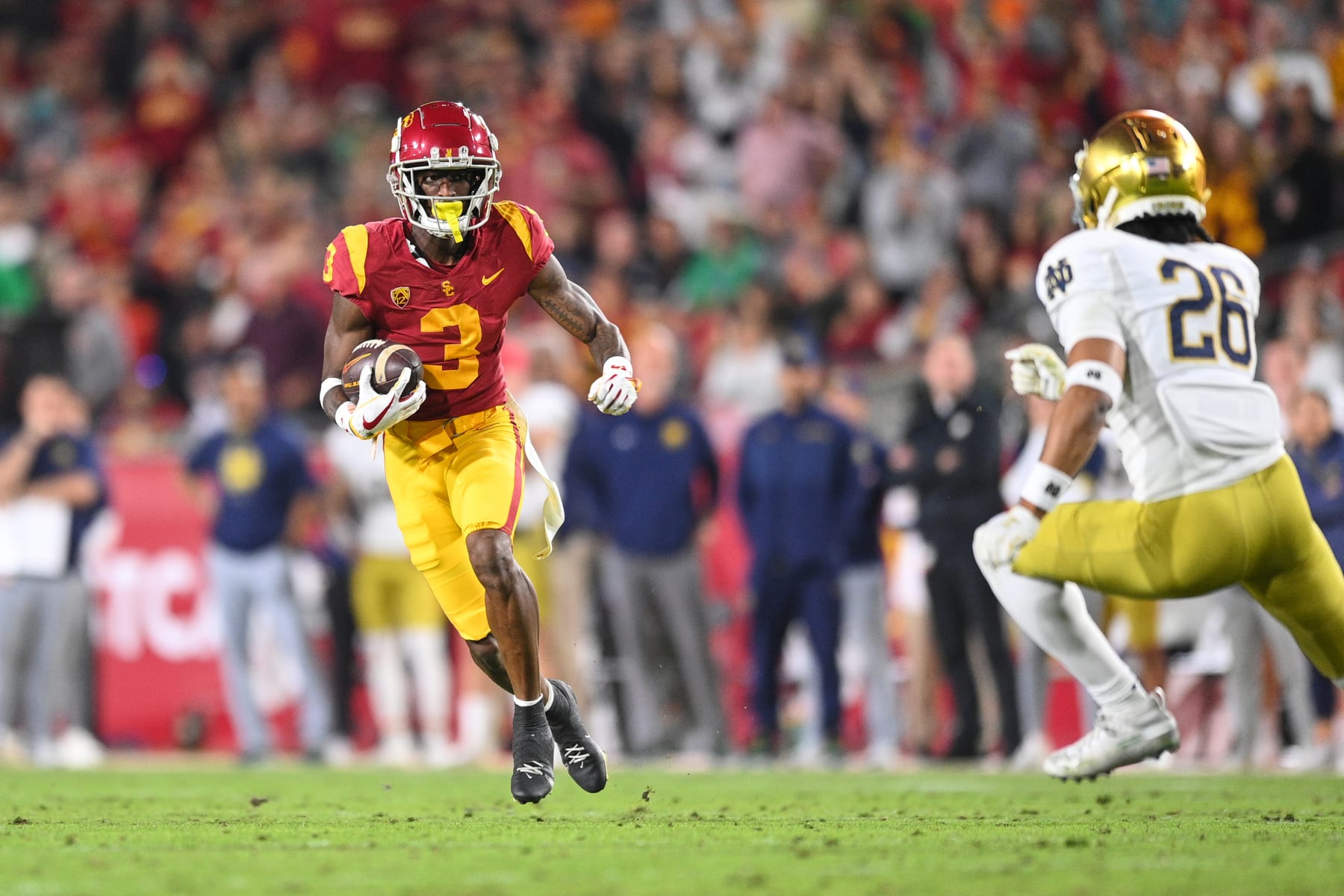
Coming into the combine, everyone knew Jordan Addison isn't the biggest guy in the world, so his measuring in just a shade over 5'11" and 173 pounds wasn't a surprise. However, his underwhelming athletic testing numbers were a bit shocking.
Addison ran a 4.49-second 40-yard dash, which isn't a bad time per se, but he needed to be closer to the 4.3s than the 4.5s given his slender frame. Wide receivers who are under 180 pounds need to be able to stretch the field vertically, and now there are questions on whether he can do that at the next level.
That's why the Trojan fell to No. 23 overall and the third wide receiver on B/R's latest big board as TCU's Quentin Johnston (No. 10) and Ohio State's Jaxon Smith-Njigba (No. 12) pulled ahead by 0.5 and 0.4 points, respectively, on the grading scale.
To get back into that category, Addison will need to do two things at his Pro Day; knock down that 40-time by at least a few hundredths of a second and/or post an impressive agility score. He sat out of the shuttle and three-cone drills while Smith-Njigba topped the charts with times of 3.93 and 6.57 seconds. The former is the fourth-best by a wideout since 2007.
If a team is looking for a big-bodied receiver, then Johnston is their guy no matter what and Addison likely was never on their radar. However, clubs could be deciding between him and Smith-Njigba, and after the combine, the Buckeye has the momentum.
Kayshon Boutte

From one disappointing and undersized wide receiver to another. Truth be told, Kayshon Boutte's draft stock has been taking a hit since the start of the college football season as he eclipsed the 100-yard mark in only two out of 11 games and finished the campaign with just two touchdowns. Unfortunately, that trend continued in Indianapolis.
Boutte measured in a quarter-inch above 5'11" and right at 195 pounds, nearly an inch shorter and 10 pounds lighter than his listed height and weight at LSU. Like Addison, he needed to post an impressive 40-yard dash time at that size, and the 4.5 he ran simply won't cut it. Combining that with a 4.25-second shuttle isn't exactly what scouts were hoping for from a wideout of his stature.
To make matters worse, his 29-inch vertical earned 0.53 points out of 10 on RAS' scale, so not only is he short for the position, but he's not going to be able to go up and high-point the ball in the air in contested catch situations. That's a tough combination to overcome, in addition to not having blazing speed.
The Tiger needs to cut down his 40-time and put up some better numbers in the agility testing to stop sliding down draft boards. He didn't participate in the three-cone drill at the combine, so that could be one area during his Pro Day that he performs well in to ease some concerns.
Otherwise, it will be hard for him to land inside the Top 100 picks, as he currently sits as the 110th overall prospect on B/R's big board.
Clark Phillips
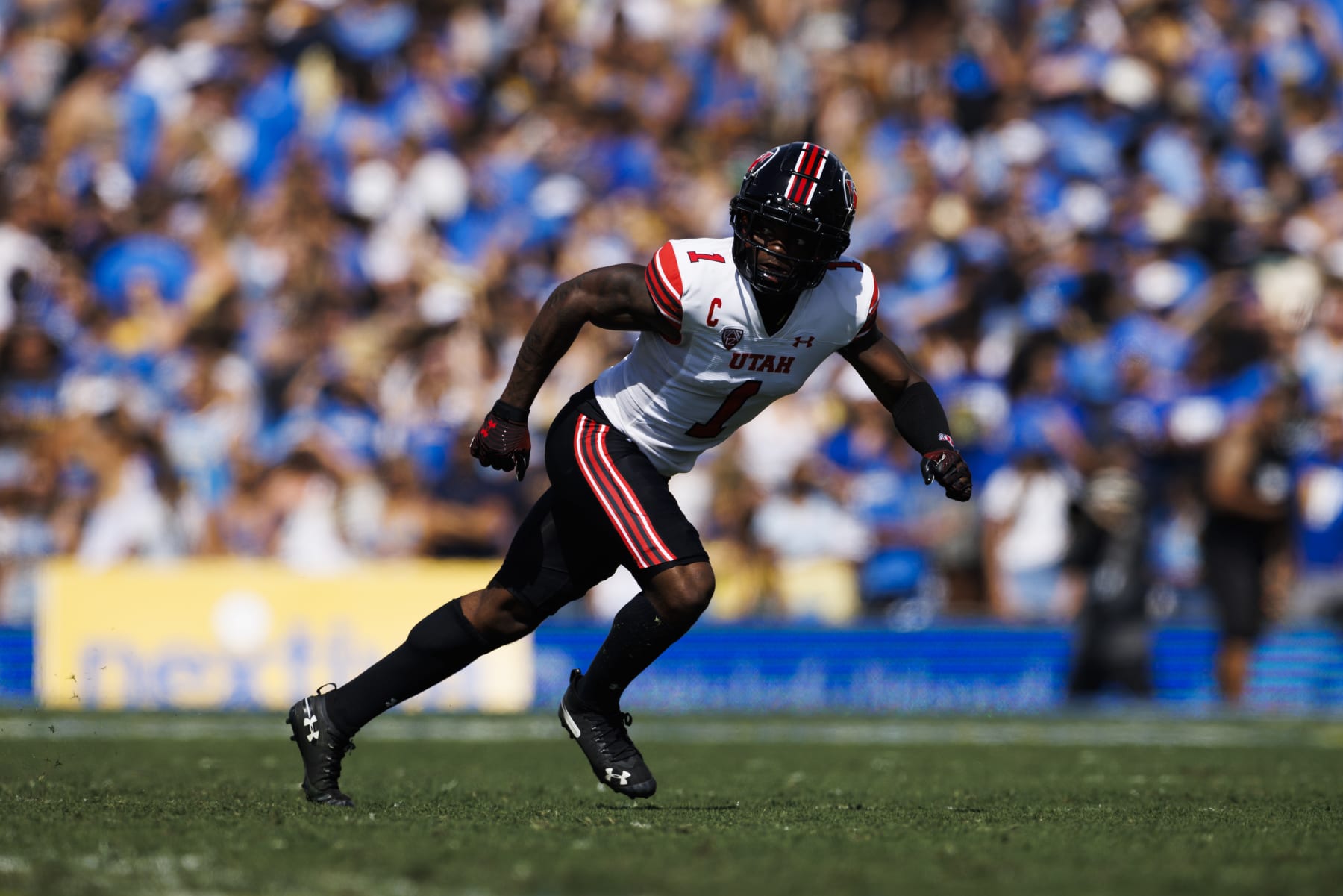
Clark Phillips is another prospect who was expected to be on the lower end of the measurement charts, so him being only 5'9" and 184 pounds isn't much of a surprise. In fact, it kind of makes his bench press even more impressive as he did crank out 18 reps at 225, more than 40 pounds heavier than his body weight.
However, Phillips 33-inch vertical is worrisome. That earned just a 2.74 score from RAS and means that he's going to have little to no chance at covering bigger receivers, especially on 50/50 balls. But even that wasn't the most concerning aspect of his workout.
The Utah product clocked a 4.32-second 20-yard shuttle time, which translates to just a 3.73 for the position on RAS' scale. The biggest problem with that number is that he's projected to be a nickel or slot corner at the next level, where change-of-direction skills are extremely important.
Most offenses have their slot receivers run shorter and sharp-breaking routes, often based on how the defender is playing the receiver. For example, if the defensive back is playing with inside leverage, the wideout will have the option to break the route to the outside in an attempt to make the defender wrong and vice versa.
Also, the closer you are to the middle of the field, the more ground there is to cover laterally, so the nickelback must be able to get in and out of his cuts quickly to either cover the receiver or make a tackle shortly after the catch.
Phillips needs to knock that shuttle time down and post a good three-cone at his Pro Day, or it will be hard for NFL scouts and GMs to find a scheme fit/position for him at the next level.
Mike Morris
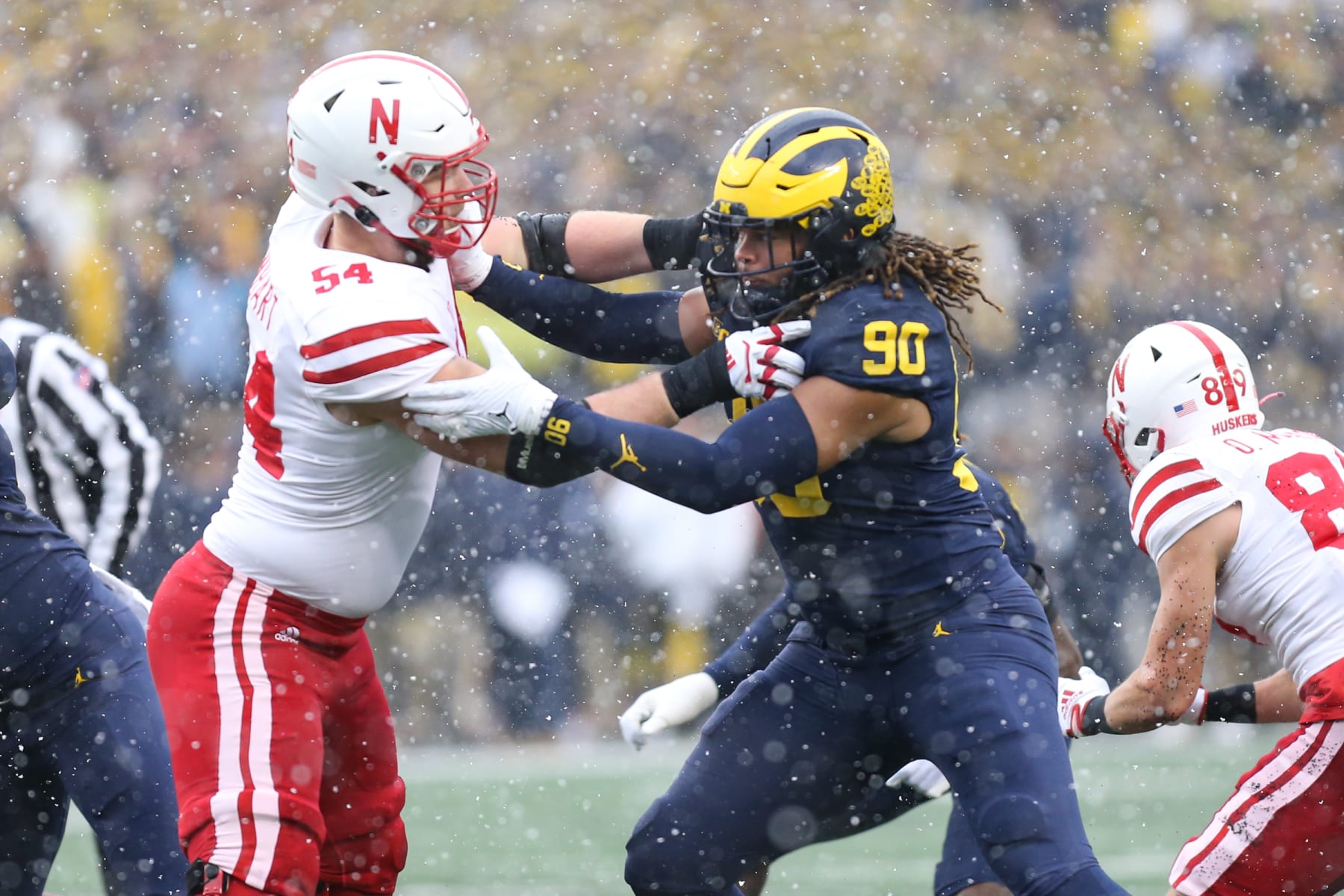
If you run Mike Morris' testing numbers in Indianapolis as a defensive tackle, he earned a respectable 7.86 RAS score. He was listed at 292 pounds on Michigan's roster this season so, at first glance, playing on the inside more as a pro than he did in Ann Arbor seems like a natural transition. However, the combine reveals a player's true weight...
Morris either lost over 15 pounds while training or the figure above was significantly inflated, as he tipped the scale in Indianapolis at 275 pounds. He did suffer an injury later in the season that could have caused him to drop weight, but regardless, his testing numbers just aren't going to cut it as a defensive end.
His 40-yard dash time is a great example of how the evaluation changes based on what position he'll play. A 4.95 is good enough for an elite 8.86 mark from RAS as a tackle, but the grade drops to 3.51 as an end. Even more concerning is his slow 10-yard split (1.72 seconds), as those figures are the difference between an 8.44 score and a 3.90, respectively.
The reason why the 10-yard split is so important is it's a test of a defensive lineman's get-off. It's even more significant on the edge because you want players who explode off the ball and put pressure on offensive tackles vertically. It's still important on the inside but less significant because guards and centers will always have help on the outside.
So, to avoid being labeled as a "tweener", Morris is either going to have to get his weight back up or show more explosiveness at his Pro Day.
Christopher Smith II
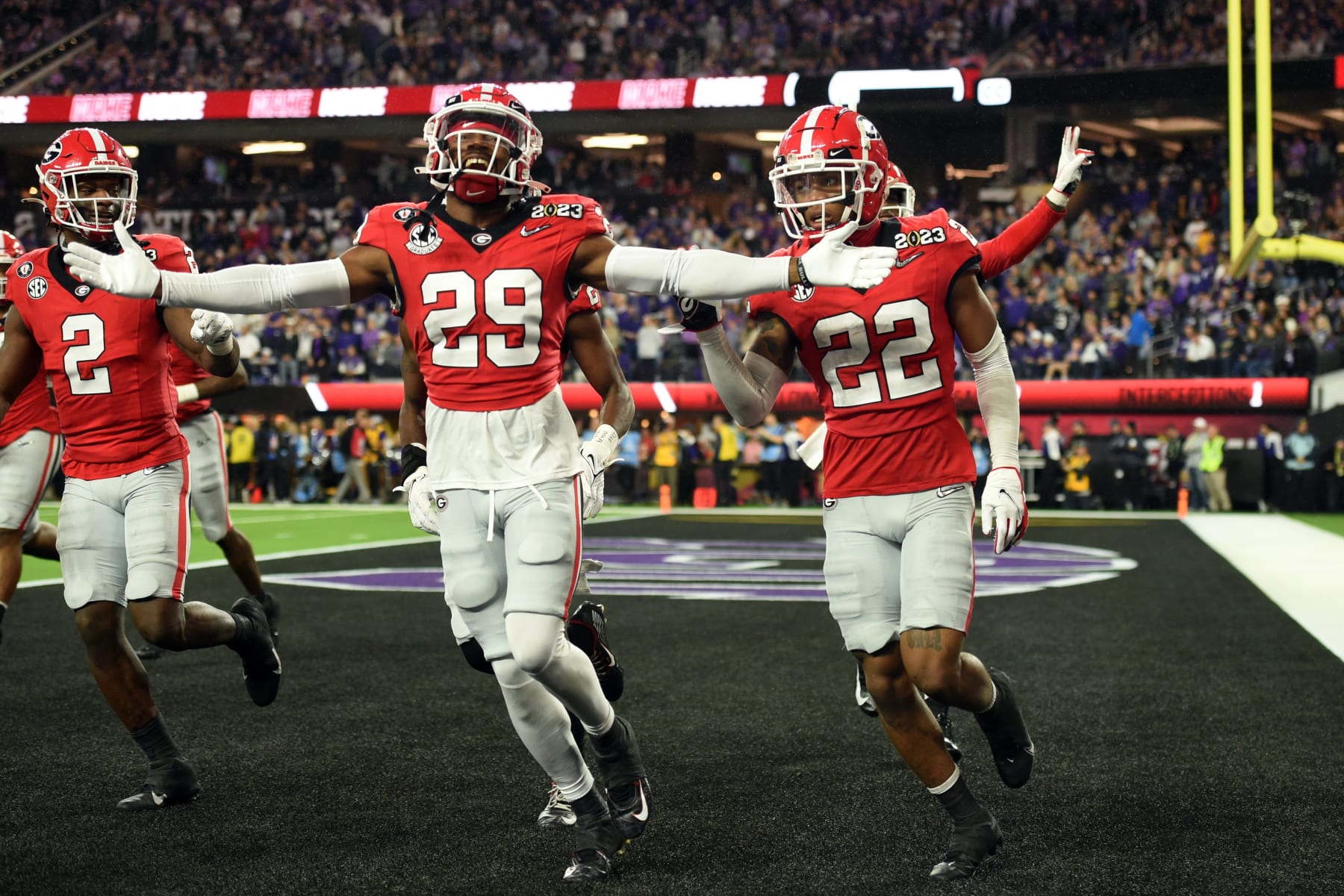
To say Christopher Smith II had a disappointing performance at the combine would honestly be an understatement. He entered the week as B/R's 17th-best prospect overall, the second-highest graded defensive back and first safety. However, he dropped to 38th, fifth and third in those respective categories on the post-combine big board.
Of all the safeties who tested, Smith recorded the lowest RAS Score at 2.97. For perspective, the site lists an "average" score for a safety at 5.21, so he was more than two full points below the baseline.
Probably the biggest concern with the Georgia product's workout was his 4.62-second 40-time, which is a 4.55 out of 10 on RAS' scale. What's peculiar, though, is his 10-yard split— 1.56 seconds and an 8.20 score—was fairly impressive. Essentially, that means he started well and just ran out of gas.
Why that's significant for safeties is because long speed is important for the position. As the name implies, they're the last line of defense and often the last defender on the field who is able to prevent explosive plays from becoming touchdowns. It's often their job to chase down fast receivers and give the defense a chance to keep points off the board.
Smith's measurements also suggest that he's too small and not strong enough to play in the box. He's 5'11" and weighs just 192 pounds, and he only put up 15 reps on the bench press. That's just not going to work when tight ends or offensive linemen come to block him in the running game.
At his Pro Day in Athens, Smith is going to need to show that he can maintain his speed and cutdown that 40-time or he'll continue to slide down draft boards.
